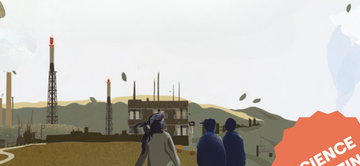This article was published in TSE science magazine, TSE Mag. It is part of the Spring 2024 issue, dedicated to “Climate Revolution”. Discover the full PDF here and email us for a printed copy or your feedback on the mag, there.
Hydrogen has the potential to revolutionize the future of air transport, with cleaner skies and a low-carbon footprint. New research by Estelle Malavolti (ENAC and TSE) uses evolutionary game theory to assess the prospects for successful adoption of green hydrogen solutions by airlines and airports.
Energy-rich hydrogen offers important advantages over conventional jet fuels, especially for the environment. It is the most common chemical element on our planet, can be produced using carbon-free electricity, and produces zero carbon emissions when burned. It can also be converted into electrical power via fuel cells.
However, our results suggest that hydrogen aircraft will only take off when consumption passes a threshold beyond which hydrogen’s high energy content outweighs its high R&D and production costs. The percentage of initial adopters needs to be sufficiently high among both airports and airlines for the market to push everyone to adopt the technology.
Arrival at this tipping point can be accelerated by green consumers, taxes, subsidies, or reduced airport charges for hydrogen aircraft. Otherwise, only fully hydrogen-powered aircraft using direct combustion can reach carbon neutrality by 2050, assuming the technology is available by 2030. In-aircraft fuel-cell systems will only be adopted if weight or energy losses can be reduced.
FURTHER READING
Shangrong Chen, Sai Bravo Megarejo, Romain Mongeau, and Estelle Malavolti (2023) - Adopting and diffusing hydrogen technology in air transport: An evolutionary game theory approach – Energy Economics




